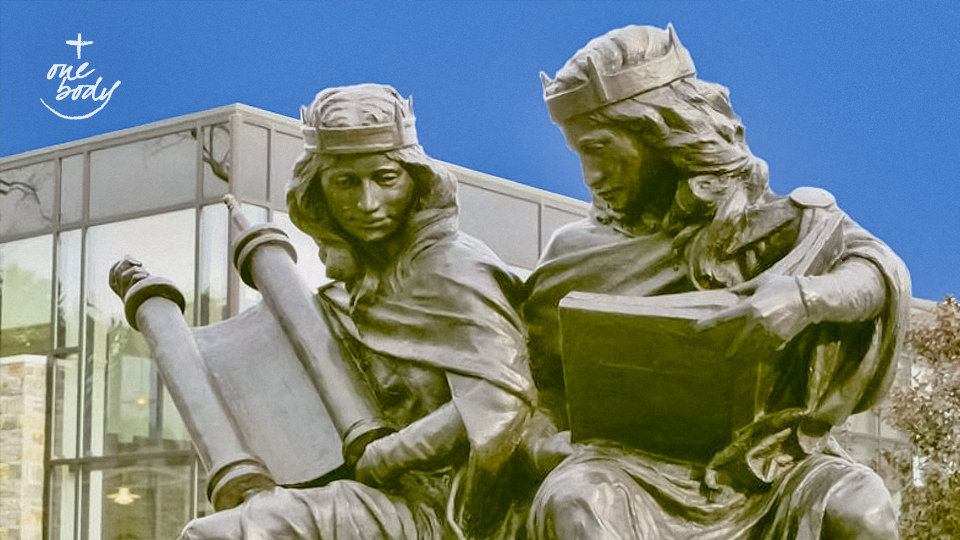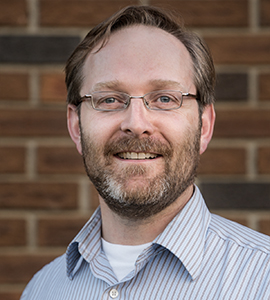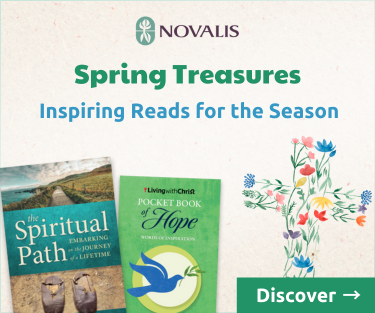

Nostra Aetate at 60: Spotlight on Interreligious Relations | One Body
Julien Hammond
Saturday, February 15, 2025

"Synagoga and Ecclesia in Our Time." St. Joseph's University, Philadelphia. Commissioned to commemorate the 50th anniversary of Nostra Aetate, this sculpture updates traditional imagery to reflect a more fraternal relationship between Judaism and Christianity. Wikimedia Commons.

Nostra Aetate at 60: Spotlight on Interreligious Relations
by Julien Hammond
February is a special month to recognize and celebrate the many efforts made in communities all across Canada to promote healthy and active interreligious relationships. For the past 15 years, the United Nations has designated February 1-7 as World Interfaith Harmony Week, dedicated to spreading “the message of harmony and tolerance among the followers of all the world’s religions, faiths and beliefs.” It adheres, in the broadest possible terms, to the principles of “Love of God (or the Good)” and “Love of Neighbour.” In my own city, as in many Canadian cities, World Interfaith Harmony Week is marked by a variety of activities including open house events at churches, temples, mosques, and synagogues; educational and dialogue events; concerts and spoken word events; and of course prayer events led by and involving different religious communities. It is a beautiful weeklong celebration of local religious diversity, and an annual reminder and recommitment within each religious community, of the importance of supporting one another and working together for the common good. While the Catholic Church does not officially mark World Interfaith Harmony Week, at least not within the liturgical calendar, many Catholics – from the popes on down – are actively engaged in promoting interreligious connections and activities all around the world. Indeed, it is not an exaggeration to identify the Catholic Church today as a leader in the field of interreligious relations. None of this is accidental, of course. This coming October, our Church will mark the 60th anniversary of Nostra Aetate, the Second Vatican Council’s “Declaration on the Relation of the Church to Non-Christian Religions.” Nostra Aetate – one of the shortest of all the Vatican II texts – is something of a “Magna Carta” that establishes the Church’s commitment to “examine more carefully its relations with non-Christian religions” and encourages (“earnestly begs”) the Christian faithful to enter into life-giving relationships with the followers of other religions for the common good and “to be at peace with all people” (#5). This mandate, or rather this call, was issued in 1965; Catholics the world over have now been living their way into answering that call for six decades.Nostra Aetate revisited
Nostra Aetate (NA) is written in five parts:- An introductory section situates the Church’s interest in interreligious relations within a context of growing “bonds of friendship” that have developed between all peoples that have already developed between all peoples in the two decades since the Second World War. From the Christian point of view, all of humanity is created by God and sustained by God’s grace, and “all share a common destiny, namely God.” The different religions of the world present different responses to the great questions of human existence: Where do we come from? Where are we going? What is the meaning and purpose of life? What is the origin of evil in the world, and how do we overcome it? There is inherent value in exploring “what people have in common and what tends to bring them together.”
- Section two describes in the most general terms the main tenets of certain religious traditions, namely Hinduism and Buddhism, as well as “other religions which are found throughout the world [that] attempt in different ways to overcome the restlessness of people’s hearts by outlining a program of life covering doctrine, moral precepts, and sacred rites.”This section also contains the often quoted (and often misquoted) paragraph that admits a certain tension between the Church’s desire to dialogue and its obligation to evangelize.
The Catholic Church rejects nothing of what is true and holy in these religions. It has a high regard for the manner of life and conduct, the precepts and doctrines which, although differing in many ways from its own teaching, nevertheless reflect a ray of that truth which enlightens all men and women. Yet it proclaims and is in duty bound to proclaim without fail, Christ who is the way, the truth, and the life (John 1.6). In him, in whom God reconciled all things to himself (see 2 Corinthians 5.18-19), people find the fullness of their religious life.
The Council Fathers urge Catholics, therefore,to enter with prudence and charity into discussion and collaboration with members of other religions. Let Christians, while witnessing to their own faith and way of life, acknowledge, preserve and encourage the spiritual and moral truths found among non-Christians, together with their social life and culture.
These two paragraphs, which were considered shocking at the time and have lost nothing of their impact in our contemporary context, form the basis for much of the interreligious work undertaken by the Holy See and the Catholic Church in general throughout the post-conciliar era. (More on this below). - The third section of NA focuses on the Church’s relationship to Islam. As the second largest religious population in the world, and one that Christianity has often been at odds with historically, it is very significant to read in NA that “the Church has … a high regard for the Muslims.” After identifying many of the teachings that Christians and Muslims hold in common, and acknowledging the troubled history of Christian-Muslim relations, the Council rather directly (and naively?) “pleads with all to forget the past,” before imploring both communities to work together to achieve mutual understanding and to “preserve and promote peace, liberty, social justice, and moral values.” The legacy of post-Vatican II interreligious relations between Catholic and Muslim leaders and communities is both remarkable and worthy of a dedicated future article in this blog series.
- Section four of NA turns our attention to the relationship of the Church to Judaism and the Jewish people. We have featured this section previously in a couple of One Body posts (for example, here and here) for its remarkable content and impact in setting a new course for modern Jewish-Catholic relations.NA #4 outlines the strong spiritual ties that bind Christianity to Judaism, in a way that is quite distinct from the Christian relationship to any other religion. Addressing various erroneous teachings that tragically made their way into Christian consciousness over the centuries, the Council affirms the permanence of the Jewish covenant with God, presents a corrective to the anti-Jewish accusation of deicide, offers an instruction for amending catechesis and preaching regarding Jews and Judaism, and pronounces an explicit rejection of antisemitism “levelled at any time or from any source against the Jews.” These “new” correctives and teachings have all become the cornerstones of Catholic-Jewish dialogue in the post-conciliar era.
- The fifth and final section of NA implores the whole Church to embrace anew the commandment to love our neighbour: “We cannot truly pray to God the Father of all if we treat any people as other than sisters and brothers, for all are created in God’s image.” The Council declares powerfully, “any discrimination against people or any harassment of them on the basis of their race, colour, condition in life, or religion” is “foreign to the mind of Christ.” And, finally, readers are reminded that the goal of all interreligious dialogue is ultimately peacemaking, friendship, and the integrity of the Gospel lived in the world.
Legacy of Nostra Aetate
Already before the end of the Council, in 1964, Pope Paul VI set up a Secretariat for non-Christians (later called the Pontifical Council for Interreligious Dialogue, and today referred to as the Dicastery for Interreligious Dialogue). This body has been at the forefront of implementing and developing the teachings of Nostra Aetate and the Second Vatican Council for the past sixty years. This has been happening through various means and methods including:- supporting dialogue among Christians concerning relations with followers of other religions;
- providing resources and guidance for the work of dialogue that is being done in local Catholic Churches;
- sustaining relationships and sponsoring events that foster a spirit of dialogue and fraternity with various groups representing other religious traditions;
- encouraging the study of religions among Christians and inviting followers of other religions to study Christianity more deeply;
- promoting the formation of persons dedicated to dialogue, both at an intellectual and lived-experience level. (Dicastery for Interreligious Dialogue, “Goals and Activities.”)
- Dialogue and Mission (1984)
- Dialogue and Proclamation (1991)
- Dialogue in Truth and Charity (2014)
Interreligious Relations and the Catholic Church in Canada
Here in Canada, the Canadian Conference of Catholic Bishops maintains active formal dialogues with Hindu, Muslim, and Jewish communities in Canada. In 2014, celebrating the 50th anniversary of Nostra Aetate, the CCCB issued a bulletin (part of its “A Church in Dialogue” series) describing each of these particular dialogues and highlighting some of the fruits achieved through them. As indicated at the beginning of this article, many interreligious activities happen today in cities and towns all across Canada. As our population has grown more diverse, so have the opportunities for meeting and engaging neighbours of other religious traditions, and discovering the beauty of interreligious relations in the everyday encounters of our lives. As that 2014 CCCB bulletin states,Nostra Aetate continues to provide inspiration and guidance as to how, despite our differences, Christians and people of other beliefs can work together to build up a world that reflects the best of our religious heritages, where religion is a source of peace and collaboration, instead of an excuse for violence or division.It is a joy to engage in this sacred work and to discover the beauty of individuals and communities from other religious communities who are interested in working with us on the very same things.
 Julien Hammond has been the ecumenical officer for the Catholic Archdiocese of Edmonton for over twenty years. He has served as a member of the Roman Catholic-United Church of Canada Dialogue, the Anglican-Roman Catholic Dialogue in Canada, and the Christian Church (Disciples of Christ)-Roman Catholic International Consultation. He is currently a member of the Jewish-Catholic national dialogue, co-sponsored by the Canadian Rabbinic Caucus and the Canadian Conference of Catholic Bishops.
Julien Hammond has been the ecumenical officer for the Catholic Archdiocese of Edmonton for over twenty years. He has served as a member of the Roman Catholic-United Church of Canada Dialogue, the Anglican-Roman Catholic Dialogue in Canada, and the Christian Church (Disciples of Christ)-Roman Catholic International Consultation. He is currently a member of the Jewish-Catholic national dialogue, co-sponsored by the Canadian Rabbinic Caucus and the Canadian Conference of Catholic Bishops.Related Articles:
Category: Dialogue, Ecumenism
Tag: interfaith, interreligious, Interreligious Dialogue, Nostra Aetate, One Body, Vatican II
What does the 500th anniversary of the start of the Anabaptist movement mean for the unity of the church? | One Body
Tuesday, March 25, 2025
 Jeremy Bergen
Jeremy Bergen
Jeremy Bergen reflects on the origins and history of the Anabaptist movement and its implications for ecumenical dialogue.
Dominican Friars Youth Interfaith Video Contest 2025
Thursday, March 13, 2025
 Salt + Light Media
Salt + Light Media
The Office for Interreligious Dialogue and the Dominican Friars of Toronto invite students in grades 9-12 to participate in the 2025 Youth Interfaith Video Contest.
A House Not Made With Hands: St. Anne’s Anglican Church
Friday, February 21, 2025
 Scott Harris
Scott Harris
In June, 2024, the domed roof and interior of St. Anne's Anglican Church in Toronto tragically burned down. However, the parish community continues to stand strong and serve its neighbourhood.
Nostra Aetate at 60: Spotlight on Interreligious Relations | One Body
Saturday, February 15, 2025
 Julien Hammond
Julien Hammond
Julien Hammond looks back on the history of Catholic interreligious dialogue in the six decades since Vatican II's landmark Declaration.
Do You Believe This? | One Body
Friday, January 17, 2025
 Nicholas Jesson
Nicholas Jesson
Nicholas Jesson reflects on the common faith of Christians, the theme of this year's Week of Prayer for Christian Unity.
1
2
3
4
5
6
7
8
9
10
11
...
17
>>
SUPPORT LABEL
$50
$100
$150
$250
OTHER AMOUNT
DONATE
Receive our newsletters
Stay Connected
Receive our newsletters
Stay Connected










